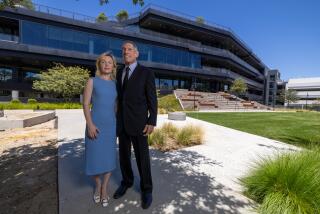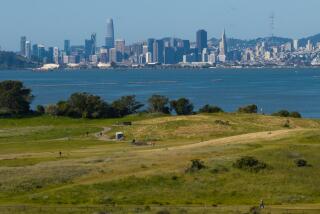Caspers Park Biomedical Facility OKd Despite Ecology Opposition
- Share via
A biomedical research and development facility on private property within the Ronald W. Caspers Wilderness Park received unanimous approval this week from the Board of Supervisors, despite opposition from environmentalists.
Supervisors voted Tuesday to allow construction of 23 buildings on a 101-acre parcel that was originally approved in 1981. The original permit had expired without any building getting under way, and in 1983 the park was expanded to surround the site.
Dr. Albert Nichols, head of the Nichols Institute, said the facility will serve hundreds of hospitals across the country by performing diagnostic tests in such medical research areas as leukemia in children and breast cancer in women.
Opponents--including the Sierra Club, the Sea and Sage Chapter of the National Audubon Society and Laguna Greenbelt Inc.--said that while the institute’s purpose was a good one, the buildings should be built elsewhere.
But board members said they had a commitment to the institute and contended that when the additional parkland was accepted for Caspers, now a 7,500-acre park seven miles east of San Juan Capistrano, it was known that the institute would be built there.
In a separate action, the supervisors expanded public access to stretches of beach between South Laguna and San Clemente.
The board voted unanimously to accept grants to build stairways to South Laguna beaches at Bluff Drive, known as Secret Cove, and Fifth Street, known as Totuava Bay Beach, and to fix an underpass at Coast Highway and Camino Capistrano north of San Clemente.
Residents of Bluff Drive contended that the improved public access would increase traffic dangers and bring more people to swim on a small, treacherous beach. The supervisors said state law required them to improve access.
More to Read
Sign up for Essential California
The most important California stories and recommendations in your inbox every morning.
You may occasionally receive promotional content from the Los Angeles Times.













